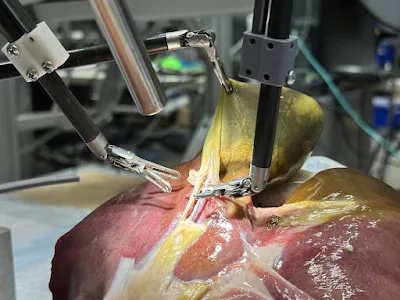For the first time, a realistic surgical procedure can be carried out by a robot without human help
It is becoming more and more obvious that robots have a bright future in surgery. Human surgeons could operate on patients thousands of miles away using robotic arms, or they could leave robots to operate on their own once the surgeon gives the all-clear. However, the ability of a robot to perform surgery without the need for remote human intervention or prior mapping has not yet been accomplished. For the first time, a robot created at Johns Hopkins University has accomplished what may seem like science fiction.
It functions similarly to how a young surgeon learns from his mentor. Learn and observe first, then work independently. You can only follow a few spoken instructions at most.
The procedure in question was carried out on a life-like model of the human body rather than a real person. The researchers purposefully added some complications to the robot's gallbladder removal surgery. After overcoming all the challenges, this robotic surgeon successfully removed the gallbladder. It performed the same task as a surgical student, albeit more slowly than a skilled human surgeon. It might eventually be able to do it even more quickly.
The SRT-H robot employs Chat-GPT's machine learning architecture. Its creators used videos of Johns Hopkins University surgeons excising gallbladders from pig carcasses to train it. Images, the voices of the surgeons, and a series of posters with subtitles explaining what was happening were used to train it. After that, the process was broken down into three steps, each of which the robot was required to complete independently: holding the needle, lifting the body tissue, and suturing. In a matter of seconds, the robot was prepared to remove the gallbladder after confirming that each step was completed correctly.
It took a bit longer, but the outcome was on par with what a skilled surgeon would have achieved. Before a robot can be left alone with a live patient, more tests like this one will need to be conducted, but it appears very likely that this will happen in the future. How about you? Would you consent to having surgery done by a robot without direct human supervision?


